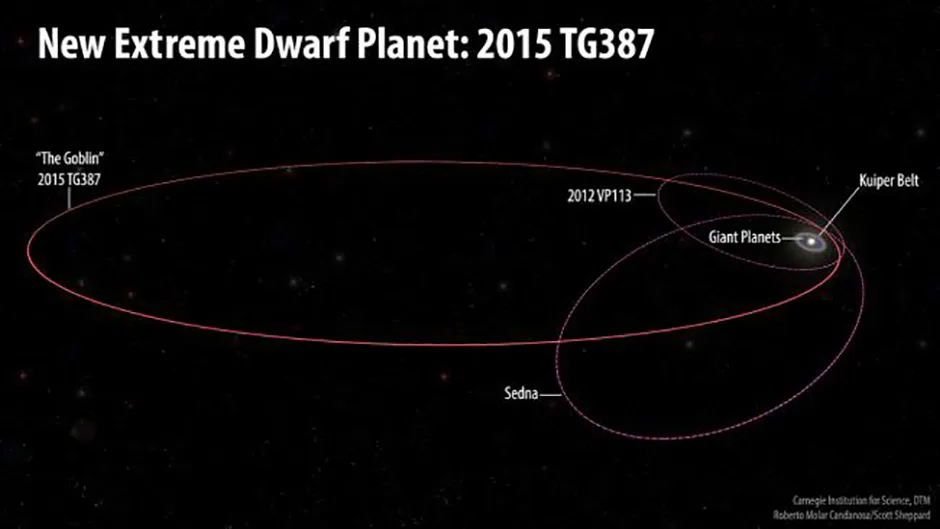A distant object has been discovered on the edge of the Solar System far beyond Pluto, and its orbit may signify the existence of a ninth Solar System planet even farther out.
The newly-found dwarf planet, named 2015 TG387 but nicknamed 'The Goblin', is located about 80 astronomical units (AU) from the Sun, where 1 AU is the average distance between Earth and the Sun.
Pluto, by comparison, is about 34 AU from the Sun. For more info on calculating these vast distances, read our guide on how astronomers measure distance in space.
The object was discovered by Scott Sheppard from the Carnegie Institution for Science, along with Northern Arizona University’s Chad Trujillo and the University of Hawaii’s David Tholen.
It is so far away that, even though its orbit is elongated, or elliptical, it never comes closer to the Sun than 65 AU.
“We think there could be thousands of small bodies like 2015 TG387 out on the Solar System’s fringes, but their distance makes finding them very difficult,” says Tholen.
“Currently we would only detect 2015 TG387 when it is near its closest approach to the Sun.
For some 99 per cent of its 40,000-year orbit, it would be too faint to see.”
The object was discovered during investigations to find Planet X, the hypothesised ninth planet believed to be lurking on the edge of the Solar System,
“These distant objects are like breadcrumbs leading us to Planet X,” says Sheppard.
“The more of them we can find, the better we can understand the outer Solar System and the possible planet that we think is shaping their orbits—a discovery that would redefine our knowledge of the Solar System’s evolution.”

2015 TG387 was first observed in October 2015, and follow-up observations were made in 2015, 2016, 2017 and 2018 to determine its orbit.
It’s thought to have a diameter of about 300 kilometres, making it a relatively small dwarf planet.
Computer simulations run by the team revealed the effect that different hypothetical Planet X orbits would have on the orbit of 2015 TG387.
Most of the simulations revealed that 2015 TG387’s orbit is stable considering the age of the Solar System, but that it is being shepherded by Planet X’s gravity.
This shepherding could explain why the most distant objects in the Solar System have similar orbits, according to the team.
“What makes this result really interesting is that Planet X seems to affect 2015 TG387 the same way as all the other extremely distant Solar System objects,” says Trujillo.
“These simulations do not prove that there’s another massive planet in our Solar System, but they are further evidence that something big could be out there.”
